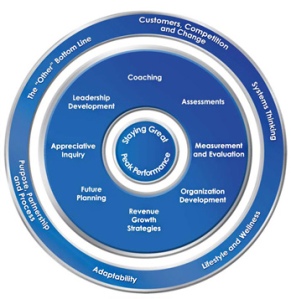 Culture. Just the name of it usually invokes a positive, feel-good emotion in many of us. Not that it’s always positive, mind you, but it just holds so much promise! It’s hard not to “like” culture.
Culture. Just the name of it usually invokes a positive, feel-good emotion in many of us. Not that it’s always positive, mind you, but it just holds so much promise! It’s hard not to “like” culture.
But cultures do differ wildly, both in their nature and their effectiveness. Zappos has its culture of going to the extreme for its employees, with the payoff coming in customer experiences second to none. Here in the upper midwest, Epic Systems Corporation, a leader in electronic medical records software, is known for its own brand of quirkiness and almost cult-like culture. And who can forget the culture of the Madison Avenue advertising firms that formed the basis for the highly acclaimed Mad Men television series.
That’s all well and good, but it’s not what’s most important about culture. Rather, the critical aspect of culture is whether for you and your organization, culture is a constraining or a catalyzing variable.
“We’re just so family focused” may be a great recruiting attractor, but if that focus translates to a culture of mediocrity and entitlement, it doesn’t work.
“We’re completely customer focused” has it’s advantages, to be sure, but if it means employees are overburdened or required to bend to every whim of every customer, your employee churn could undermine the overall organizational effectiveness.
“We’re dedicated to promoting from within” is a refrain that emphasizes rewarding those who have a particular institutional knowledge and have demonstrated their success potential. But in times of economic turmoil, having leaders who have only known one way of doing things may be the downfall of your entire organization.
So, what’s the point of all of this? Organizational culture means more than just the feel of the organization or a mantra that’s hoped to inspire and rally your workforce. Culture must include a focus on employees, a focus on customers, clarity in the strategic direction of the organization, and wrapped up in the values and ethics by which all are held accountable. It’s all of these, or its none.

This is why, at ODC, a sizable percentage of our work involves explore with leaders their organizational culture. Whether through individual or leadership team assessments and audits, evaluation of communication and work styles throughout an organizational hierarchy, coaching and mentoring of key individuals or the establishment of peer mentoring and organizational learning systems, our work involves culture.
So, if you’re not focused on culture as more than just a soft “feel-good” part of your organization, it’s high time you change your focus. Culture, measured, designed, and supported from the executive level down to the mailroom, must be your focus moving forward. There’s nothing “squishy” about culture. It’s highly integrated, highly visible, and highly critical in every organization. And at the end of the day, culture is what makes or breaks your organization….every time.
I couldn’t agree more!
Thank you.
Organizational culture is the workplace environment formulated from the interaction of the employees in the workplace. Organizational culture is defined by all of the life experiences, strengths, weaknesses, education, upbringing, and so forth of the employees. While executive leaders play a large role in defining organizational culture by their actions and leadership, all employees contribute to the organizational culture.
I couldn’t agree more. But without leadership direction and vision setting (regarding culture), too many organizations flounder with inefficient, disempowered, and disengaged employees. All employees contribute, but leadership (by definition) sets and leads the culture.